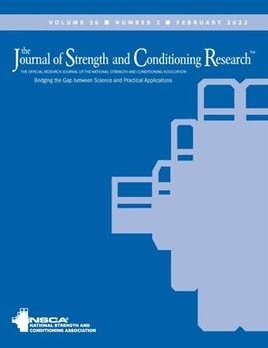Castagna C1, Impellizzeri FM1, Chamari K2, Carlomagno D1, Rampinini E1
1, School of Sport and Exercise Sciences, Faculty of Medicine and Surgery, University of Rome Tor Vergata, Rome, Italy;2, Unitè Recherche, ‘’Evaluation, Sport, Sanitè’’, National Center of Medicine in Sport (CNMSS), El Menzah, Tunisia

Yo-yo tests are very popular in soccer; however, no study has addressed details of their relation to canonical aspects of aerobic fitness. Furthermore, no information is available on the effect of the individual levels of lower limbs’ explosive strength on yo-yo tests in soccer players. The purpose of this study was to examine the physiological determinants of Yo-yo Endurance Test Level 2 (YYETL2) and Yo-yo Intermittent Recovery Test Level 1 (YYIRTL1) in soccer players. Twenty-four soccer players (body mass, 74.6 +/- 8.5 kg; height, 178.1 +/- 4.5 cm; age, 25.6 +/- 5.1 years) were tested for VO2max and ventilatory threshold (VT) on a motorized treadmill. Lower-limb explosive strength was assessed using vertical countermovement jumps (CMJ) performed on a force platform. Results showed that YYETL2 and YYIRTL1 performances (m) were significantly related (r = 0.75, p = 0.00002). YYETL2 results were significantly related to VO2max, VTVO2, and speed at VT (r = 0.75, 0.76, and 0.83, respectively; p < 0.00002). Peak treadmill speed results were significantly related to YYETL2 and YYIRTL1 (r = 0.87 and 0.71, respectively; p < 0.0003). YYIRTL1 was related to CMJ peak power (r = 0.57; p = 0.003). These findings show that YYETL2 and YYIRTL1, although adopting similar starting and progression speeds, are influenced by different physiological variables. From these results, YYETL2 can be considered an aerobic fitness-related field test, whereas YYIRTL1 can be regarded as an aerobic-anaerobic, soccer-specific field test.
J Strength Cond Res. 2006 May;20(2):320-5.